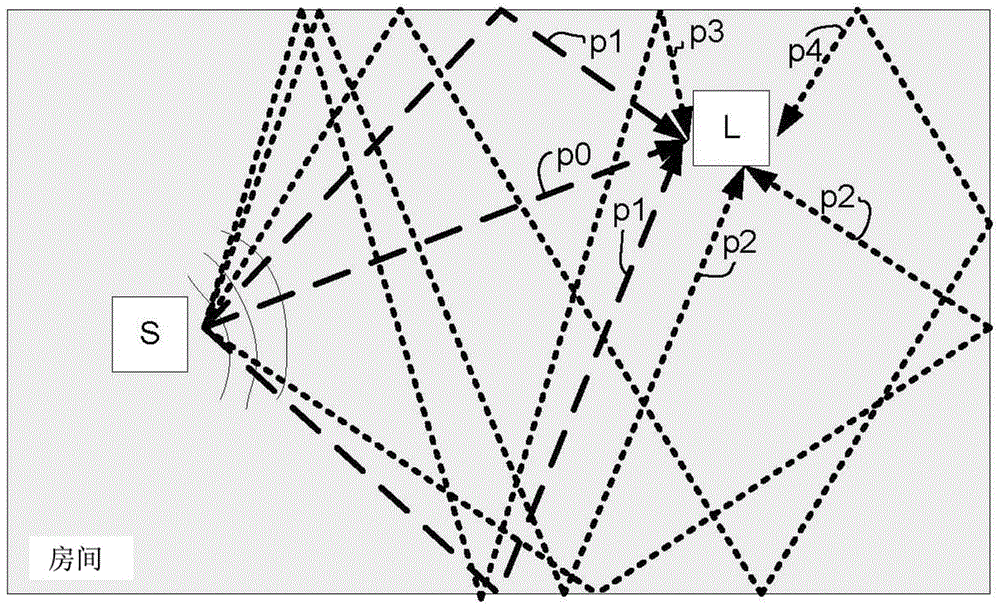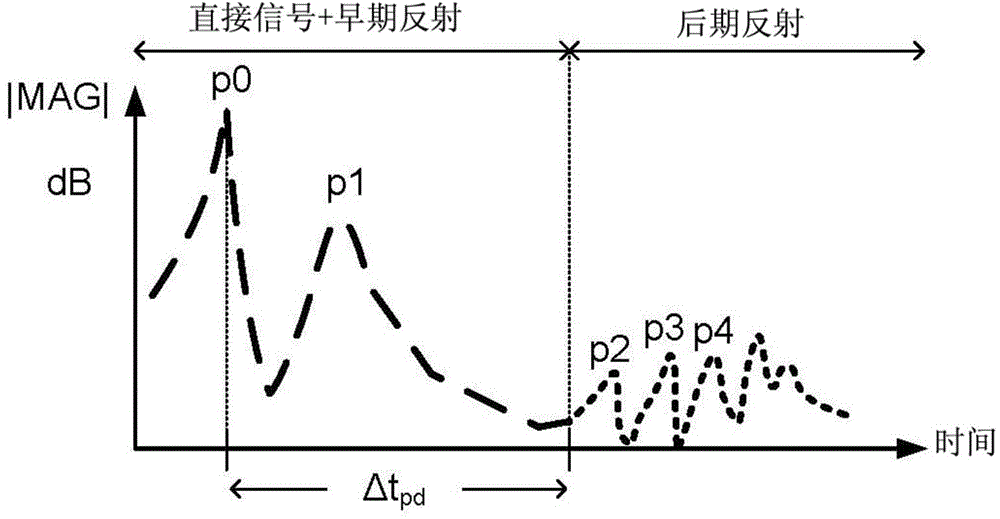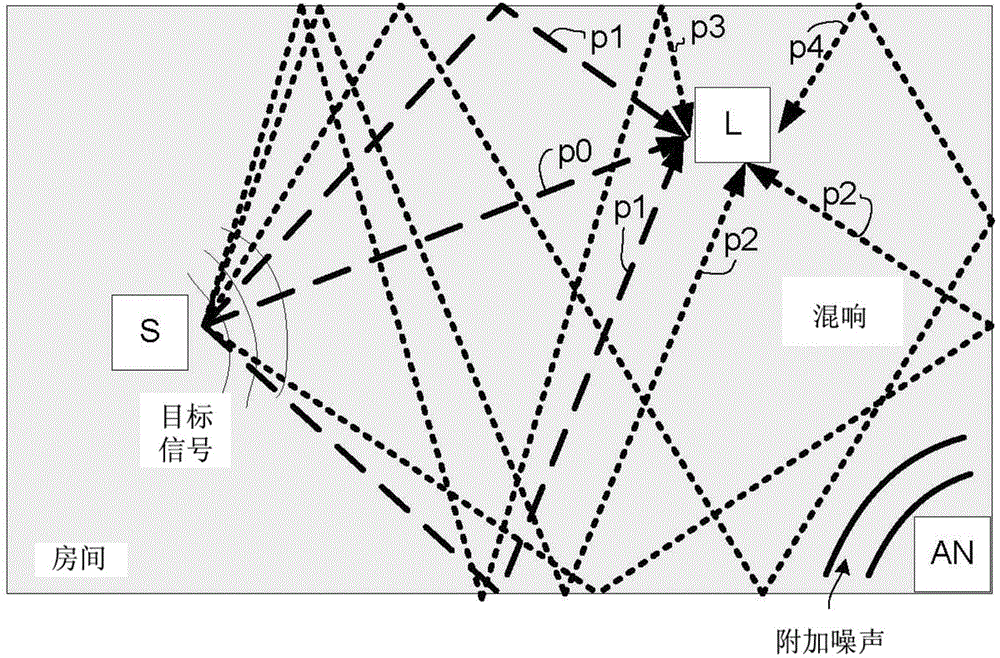Multi-microphone method for estimation of target and noise spectral variances
A noise and variance technique used in the field of multi-microphones for estimating target and noise spectral variances to improve intelligibility
- Summary
- Abstract
- Description
- Claims
- Application Information
AI Technical Summary
Problems solved by technology
Method used
Image
Examples
Embodiment Construction
[0115] Figure 1A schematically illustrates a plurality of acoustic pathways between sound sources and sound receivers located in a room, and Figure 1B is an exemplary plot of the amplitude |MAG| of a sound signal in a room versus time.
[0116] Figure 1A Schematically shows the direct propagation path p from an audio source S to a listener L in an exemplary venue (room). 0 and reflection propagation path p 1 ,p 2 ,p 3 ,p 4 acoustically propagated signal. The resulting acoustically propagated signal received by a listening device worn by a listener, eg via listener L, is the sum of five (possibly more, depending on the room) contributions of varying degrees of delay and attenuation (and possibly distortion). Direct transmission path p 0 and the early reflection propagation path (here a reflection p 1 )exist Figure 1A are indicated by dotted lines in , while the "late reflections" (here two, three and four reflections p 2 ,p 3 ,p 4 )exist Figure 1A Indicated w...
PUM
 Login to View More
Login to View More Abstract
Description
Claims
Application Information
 Login to View More
Login to View More - R&D
- Intellectual Property
- Life Sciences
- Materials
- Tech Scout
- Unparalleled Data Quality
- Higher Quality Content
- 60% Fewer Hallucinations
Browse by: Latest US Patents, China's latest patents, Technical Efficacy Thesaurus, Application Domain, Technology Topic, Popular Technical Reports.
© 2025 PatSnap. All rights reserved.Legal|Privacy policy|Modern Slavery Act Transparency Statement|Sitemap|About US| Contact US: help@patsnap.com



